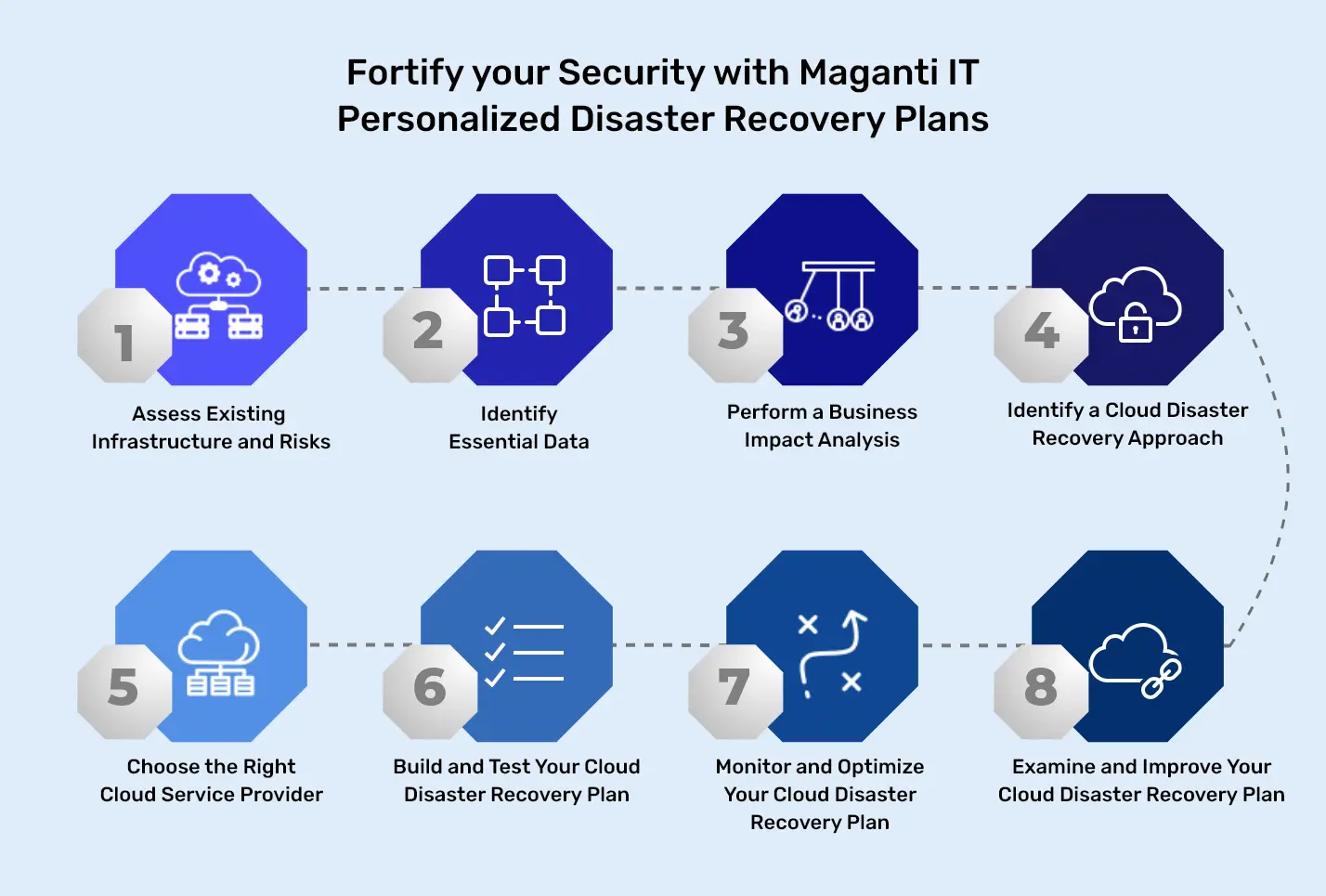Proven Strategies Every IT Leader Should Know
Technology is a big part of our lives, and the cloud makes it even better. With the cloud, we can do amazing things like run complex operations and recover from disasters quickly. Before cloud computing, managing a disaster that affected our data and systems was tough. Now, the cloud lets us create a disaster recovery plan that helps restore everything quickly. Let’s first understand what Cloud Disaster Recovery is.

The main goal of cloud DR is to protect your critical business resources and ensure they're always available and recoverable. This way, you can maintain uninterrupted business operations, no matter what happens.
Disaster Recovery (DR) is a critical component of any business continuity plan. It involves creating backups of your data and applications at a secondary location, ensuring you're prepared for any unexpected events.
Traditional DR methods often rely on local or secondary site setups. It offers limited protection against physical disasters and comes at high costs.
That's where cloud-based DR comes in. Cloud DR provides flexibility, reduces complexities, and is more cost-effective and scalable than traditional methods. With cloud DR, businesses gain continuous access to highly automated, scalable, and self-driven off-site DR services. Plus, you can enjoy all these benefits without the significant expense of maintaining a second data center or the hassle of installing and managing DR tools.
A cloud disaster recovery plan is a strategy that helps your organization restore its IT systems and data using cloud-based resources and services when disaster strikes. A disaster can be anything that prevents you from accessing your data, apps, or systems—think power outages, data corruption, natural disasters, or any other major disruption.

Our experts are here to help you craft a disaster recovery plan that’s perfectly tailored to your business needs. Here’s a quick look at what our comprehensive Maganti IT strategy covers.
1. Assess Existing Infrastructure and Risks
Getting your disaster recovery plan just right can feel overwhelming. We'll kick things off with a thorough risk assessment and impact analysis of your current IT setup and workloads. Our team will pinpoint potential threats and scenarios that could affect your cloud infrastructure — everything from natural disasters and cyberattacks to human errors and system failures. We'll also evaluate critical assets, both digital and physical, like data servers, software applications, machines, and equipment.
2. Identify Essential Data
Sorting through your data can be a time-consuming task. We specialize in optimizing data management processes, especially when identifying and eliminating redundant or non-essential data during audits. Our team will streamline the audit process, helping you efficiently pinpoint unnecessary data sets that can be safely discarded.
This approach not only reduces the size of your backups needed for cloud storage but also leads to significant cost savings and better resource utilization. With Maganti IT's guidance, your data management practices will align perfectly with your business goals, minimizing storage overheads and boosting operational efficiency.
Understanding how disasters impact your business operations is crucial. We help you carry out a detailed impact analysis to give you a clear picture of how different disaster scenarios could affect your day-to-day activities.
We also help you estimate the key parameters—Recovery Time Objective (RTO) and Recovery Point Objective (RPO)—so you know exactly how long your systems can be down and how much data you can afford to lose. With this information, you'll be well-prepared to tackle any disaster.
Choosing the right cloud disaster recovery solution can be tricky. There are several options to consider, like backup and restore, pilot light, warm standby, and multi-site, each with its own set of pros and cons.
We'll help you select the best approach based on your needs, considering factors like RPO, RTO, budget, and complexity. Our goal is to ensure that your chosen plan aligns perfectly with your business continuity objectives, optimizing your recovery efforts and making the best use of your resources.

Picking the right cloud service provider is crucial for a solid disaster recovery setup. You’ll want to look at things like infrastructure availability, how well it meshes with your current IT environment, and the provider’s reliability. We're here to help you sift through these details and find the perfect match. We'll make sure the provider you choose meets your specific RPO, RTO, budget, and complexity needs. With our expertise, you'll create a plan that keeps your business protected and ready for anything that comes your way.
As you work with Maganti IT cloud experts, you'll develop a strong disaster recovery strategy with your chosen cloud provider. But it doesn't stop there. It's important to test and update the plan regularly.
Regular testing—whether through drills, simulations, or audits—ensures everything works as expected. This way, you can be confident that your data and applications can be recovered in case of a disaster. Plus, regular updates are crucial to adapt to changes in your business and cloud environment, like adding new data sources, applications, or regions.
Maganti IT will be your go-to for keeping your disaster recovery plan effective. We'll use tools like dashboards, alerts, and reports to track everything from backup frequency to recovery readiness, quickly spotting any issues.
We don't just monitor; we also optimize. Using insights from tests, feedback, and best practices, we'll make your backups more efficient, reduce costs, and improve security.
With Maganti IT's proactive approach, you'll be ready to handle risks and recover swiftly from disruptions, ensuring your business stays up and running smoothly.
We'll keep your disaster recovery plan relevant and effective. By regularly checking how well it aligns with your company goals, we can quickly spot issues and find areas for improvement.
We stay on top of tech advancements, industry trends, and regulations to update your plan. By leveraging new cloud features and adapting to the latest standards, we ensure your strategy evolves alongside your business and the changing cloud landscape.
With our continuous support, you'll stay resilient and ready for any disruptions.
If your business relies on digital infrastructure, cloud computing disaster recovery is a must. The right cloud DR strategy can make the difference between bouncing back quickly and facing significant operational disruptions when disaster strikes. Choosing a solution that fits your needs and complies with regulations will help you avoid financial penalties and legal issues.

Do you have a cloud disaster recovery strategy in place for your business? How has it affected your operations during unexpected disruptions? Share your challenges or successes with cloud DR —we'd love to hear your experiences. Thanks for reading!



